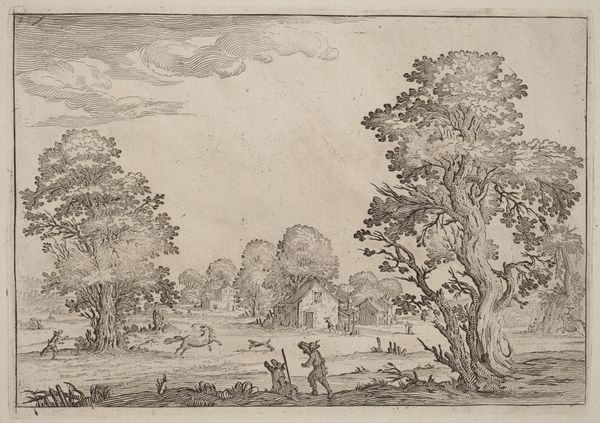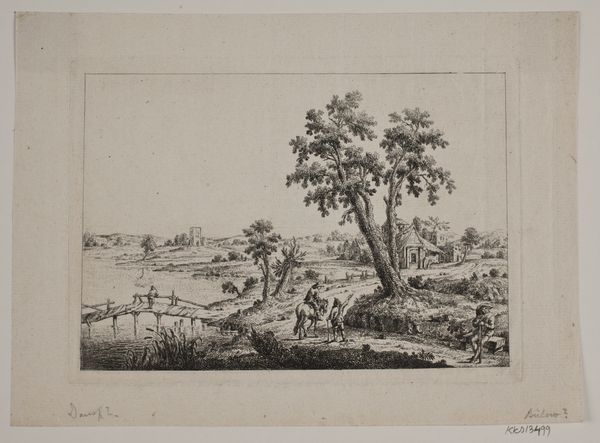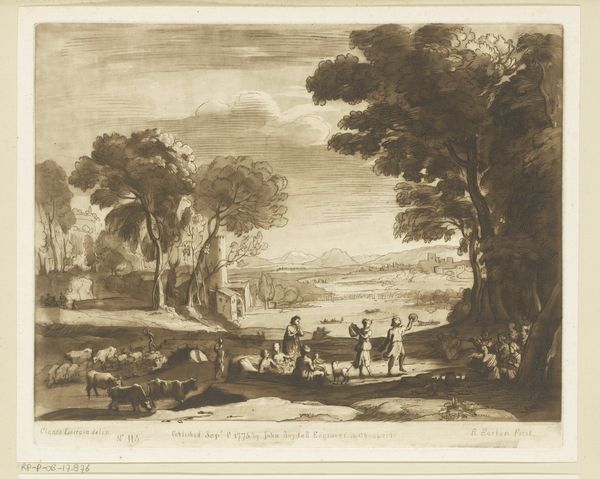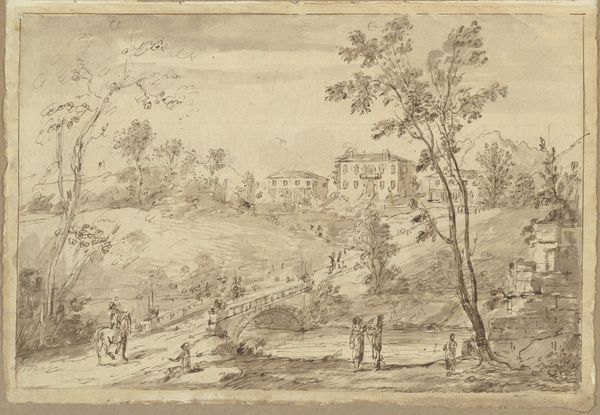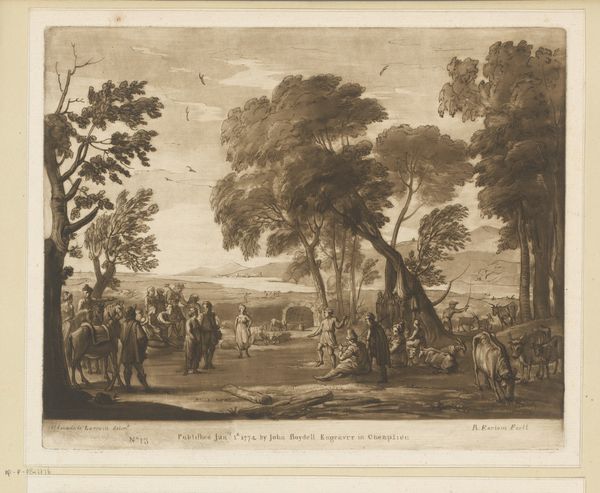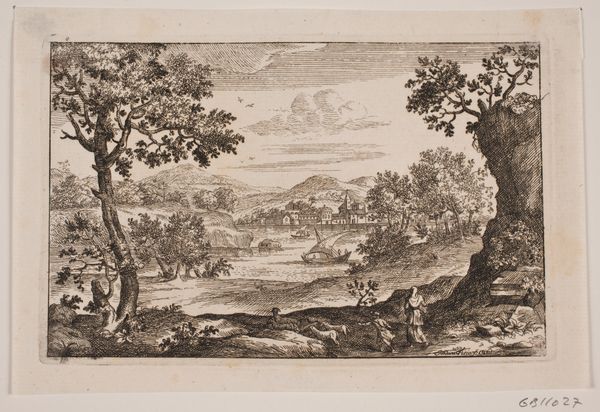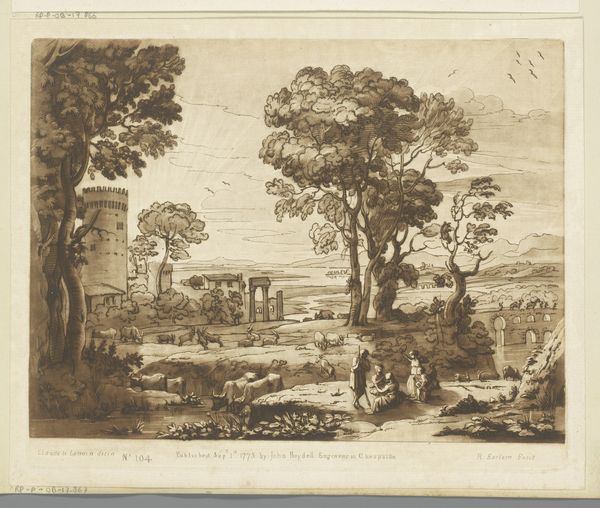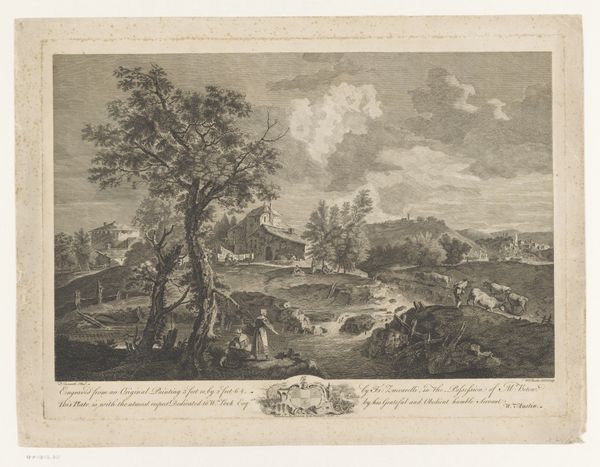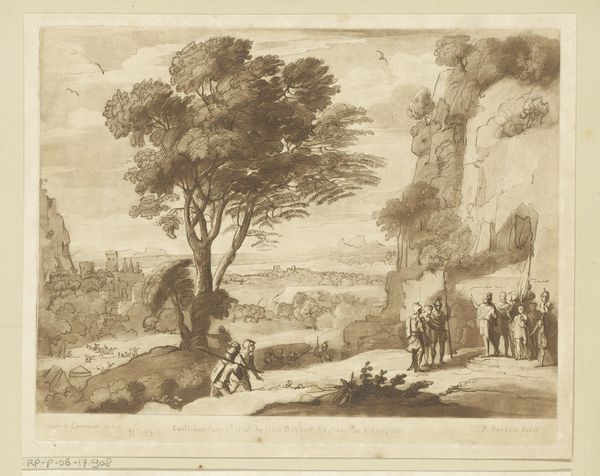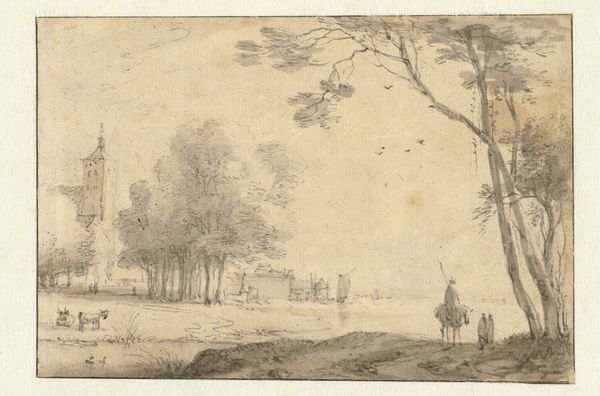
print, etching, engraving
#
baroque
# print
#
etching
#
landscape
#
etching
#
genre-painting
#
engraving
Dimensions: 122 mm (height) x 217 mm (width) (plademaal)
Curator: Welcome. Before us is Jacob Fosie's "Landskab," created in the 1740s. This landscape is an etching, currently held here at the SMK, the Statens Museum for Kunst. Editor: The first impression I have is one of delicate detail. It's a small world, teeming with quiet activity rendered in thin, precise lines. There is such intentionality present, but it seems… constrained. Curator: It's interesting that you say constrained. Looking at the societal currents, particularly regarding landscape art of that period, there was a specific framing of nature and labor taking place that dictated how landscapes were understood in cultural settings. Fosie uses etching and engraving, which are labour intensive, demanding processes that were valued. Editor: And it is in the density of that labour, of course, where meanings shift. Note how the natural forms are quite literally impressed on the page, yet there are people working within the land that this process replicates? How does this labor become valorized and commodified through artistic representation? Curator: That intersection of human and natural labor certainly speaks to the time. Remember that the Baroque aesthetic involved not just grandeur, but also the social undercurrents that fed that grandeur. The figures aren't simply strolling, they are workers in some manner--note the carts. Editor: The people working seem very small relative to the immensity of nature, although it seems humanity has encroached within the skyline behind the figures. You mentioned Baroque, so do we consider this as something aligned with typical upper class patron tastes? Curator: Broadly speaking, yes, these pastoral scenes frequently held a particular meaning, reflecting ideals that had direct appeal and relevance to the political classes and nobility, who could afford these things. It's interesting to ponder whose world this really depicts when laborers might see their conditions differently, and what’s absent from this picture. Editor: Yes. Well, by considering those gaps and absences, we see the picture beyond just surface value; thinking about production as its social foundation lets us analyze art with far greater purpose. It reveals those historical power dynamics embedded into art. Curator: Indeed. It moves us beyond aesthetic appreciation into a deeper understanding of culture, gender, and power. Editor: Exactly. And recognizing the materiality also ensures the viewers are not consuming work passively.
Comments
No comments
Be the first to comment and join the conversation on the ultimate creative platform.
